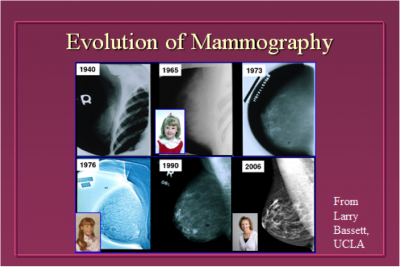A study questioning the effectiveness of mammograms in preventing breast cancer has recently hit the news and caused a lot of women to wonder what to do. Jennifer Harvey, MD, a UVA radiologist who specializes in breast cancer treatment and research, offers her take on the study and its implications.
About the Mammogram Screening Study
This article reports the combined follow-up data at 25 years for two Canadian mammography screening trials: One study of women ages 40-49 and the other for women ages 50-59. The study finds that annual mammography in these women during the study period did not reduce mortality from breast cancer compared with women who had only clinical examination.
The Mammogram Study in Perspective
The important context of this study is that this is one of nine randomized clinical trials that were performed between the late 1960s and the 1980s. Of those nine trials, seven showed a reduction in breast cancer mortality with screening mammography; the Canadian trial was not one of those seven. The fact that the results did not change at 25 years of follow-up is not news. This trial was also one of the most highly criticized, due to likely randomization errors and quality control.
We should also consider the time frame of this study. Today’s mammogram is not your mother’s mammogram. Mammograms obtained today are considerably better in quality than those that were used in the study, which took place when I was a child! Mammography was also in its youth at that time. Mammograms, like our phones and cameras, have advanced in technology over the years.
The Evolution of Mammograms in Pictures
This slide shows the technical changes in mammography over time. Most of the randomized trials were performed in the 1970s and 1980s. Although randomized trials are the “gold standard” for judging a test, the technical changes make the results a bit outdated. Mammography today is far more advanced, and now includes tomosynthesis (3D mammogram). I’ve changed a bit over the years, too!

Does Mammography Work?
Yes. All countries that have adopted routine screening mammography have experienced a significant reduction in breast cancer mortality, including the United States. While mammography is imperfect and does not detect all cancers at an early stage, it does reduce breast cancer mortality by at least 25%.
Improving Mammography: A Look Ahead
This and other studies have raised a good point, however. We do need to screen smarter. As we better understand breast cancer and breast cancer risk factors, we should work to tailor screening to an individual woman’s risk. Women who are low risk, or at risk for low-grade disease, could be screened less frequently. Women who are at higher risk or at risk for aggressive disease could be screened more frequently with tools other than mammography, such as ultrasound or MRI.
We are not there yet. Current risk models are not very good at telling which women are going to develop breast cancer and which are not. At the UVA Breast Care Center we are currently developing a breast cancer risk model that includes breast density. We believe this will help women better understand their breast cancer risk and make decisions about screening based on that information.
What type of mammography is right for you?
Visit UVA Breast Care Center to find out about the options, including 3D mammograms.